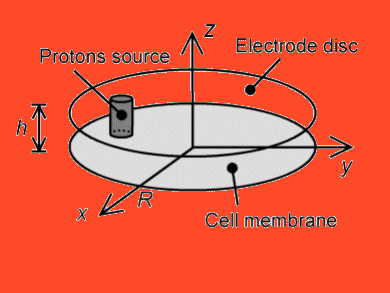Amperometry at carbon fiber electrodes, a method commonly used to detect molecules released by single living cells, may lead to biased results. New simulations performed by Christian Amatore and colleagues at the Ecole Normale Supérieure in Paris, France, show that electrochemical detection by oxidation of the released molecules may generate unwanted species that can interfere with the cell.
According to the researchers, if the cell is not equipped with compensating mechanisms, these species may cause drastic pH drops in its proximity. The team studied catecholamine release by chromaffin cells and found that the acidification strongly depends on the electrode radius.
They now want to determine whether the predicted pH changes affect the releasing process.
- Prediction of Local pH Variations during Amperometric Monitoring of Vesicular Exocytotic Events at Chromaffin Cells
C. Amatore, S. Arbault, Y. Bouret, M. Guille, F. Lemaître,
ChemPhysChem 2010, 11.
DOI: 10.1002/cphc.201000102




